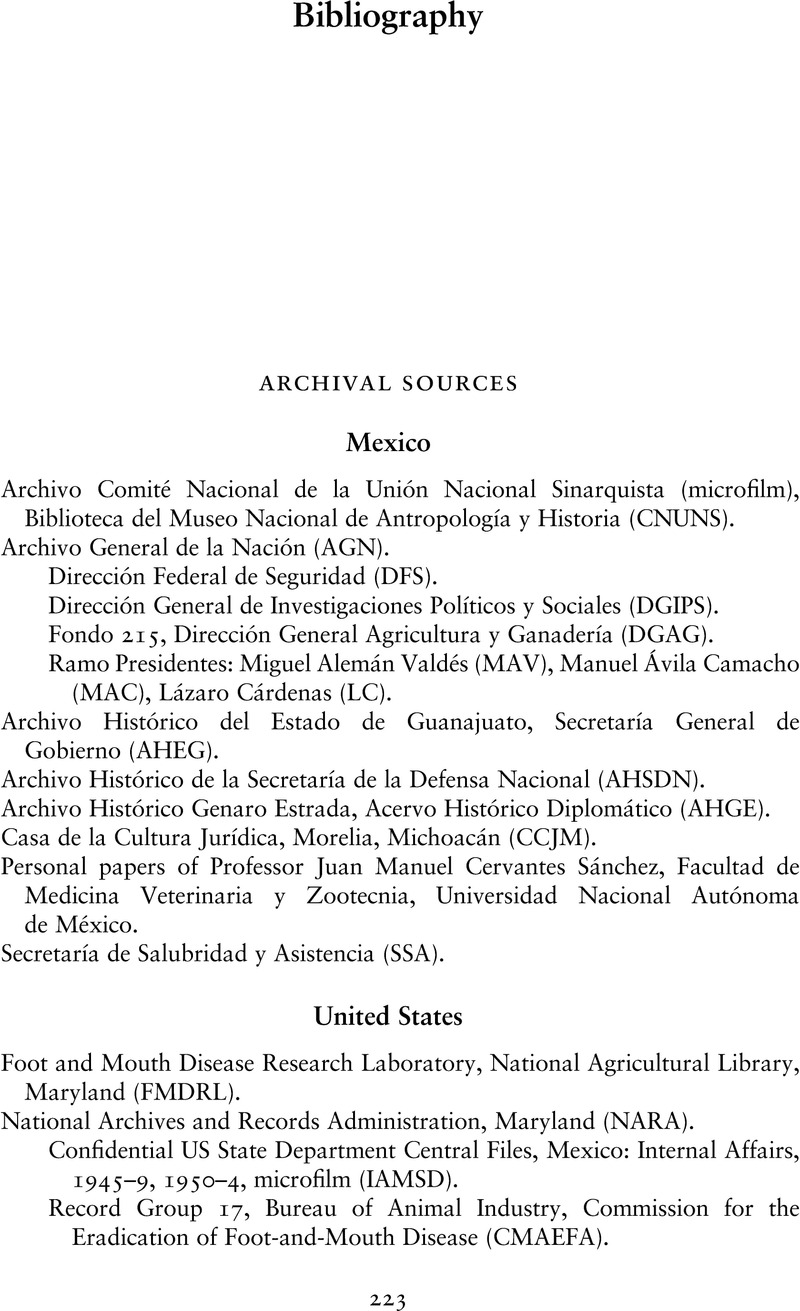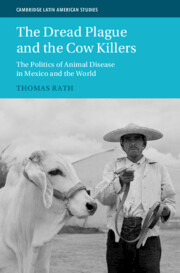Book contents
- The Dread Plague and the Cow Killers
- Cambridge Latin American Studies
- The Dread Plague and the Cow Killers
- Copyright page
- Contents
- Figures and Table
- Acknowledgments
- Abbreviations
- Introduction
- 1 Animals and Government in Mexico
- 2 Sharing Sovereignty in a Technical Commission
- 3 Spiking the Sanitary Rifle
- 4 Soldiers, Syringes, Surveys, and Secrets
- 5 Making a Livestock State
- 6 Mexico and the Cold War on Animal Disease
- Afterword
- Bibliography
- Index
- Cambridge Latin American Studies (continued from page ii)
- References
Bibliography
Published online by Cambridge University Press: 05 August 2022
- The Dread Plague and the Cow Killers
- Cambridge Latin American Studies
- The Dread Plague and the Cow Killers
- Copyright page
- Contents
- Figures and Table
- Acknowledgments
- Abbreviations
- Introduction
- 1 Animals and Government in Mexico
- 2 Sharing Sovereignty in a Technical Commission
- 3 Spiking the Sanitary Rifle
- 4 Soldiers, Syringes, Surveys, and Secrets
- 5 Making a Livestock State
- 6 Mexico and the Cold War on Animal Disease
- Afterword
- Bibliography
- Index
- Cambridge Latin American Studies (continued from page ii)
- References
Summary

- Type
- Chapter
- Information
- The Dread Plague and the Cow KillersThe Politics of Animal Disease in Mexico and the World, pp. 223 - 240Publisher: Cambridge University PressPrint publication year: 2022



